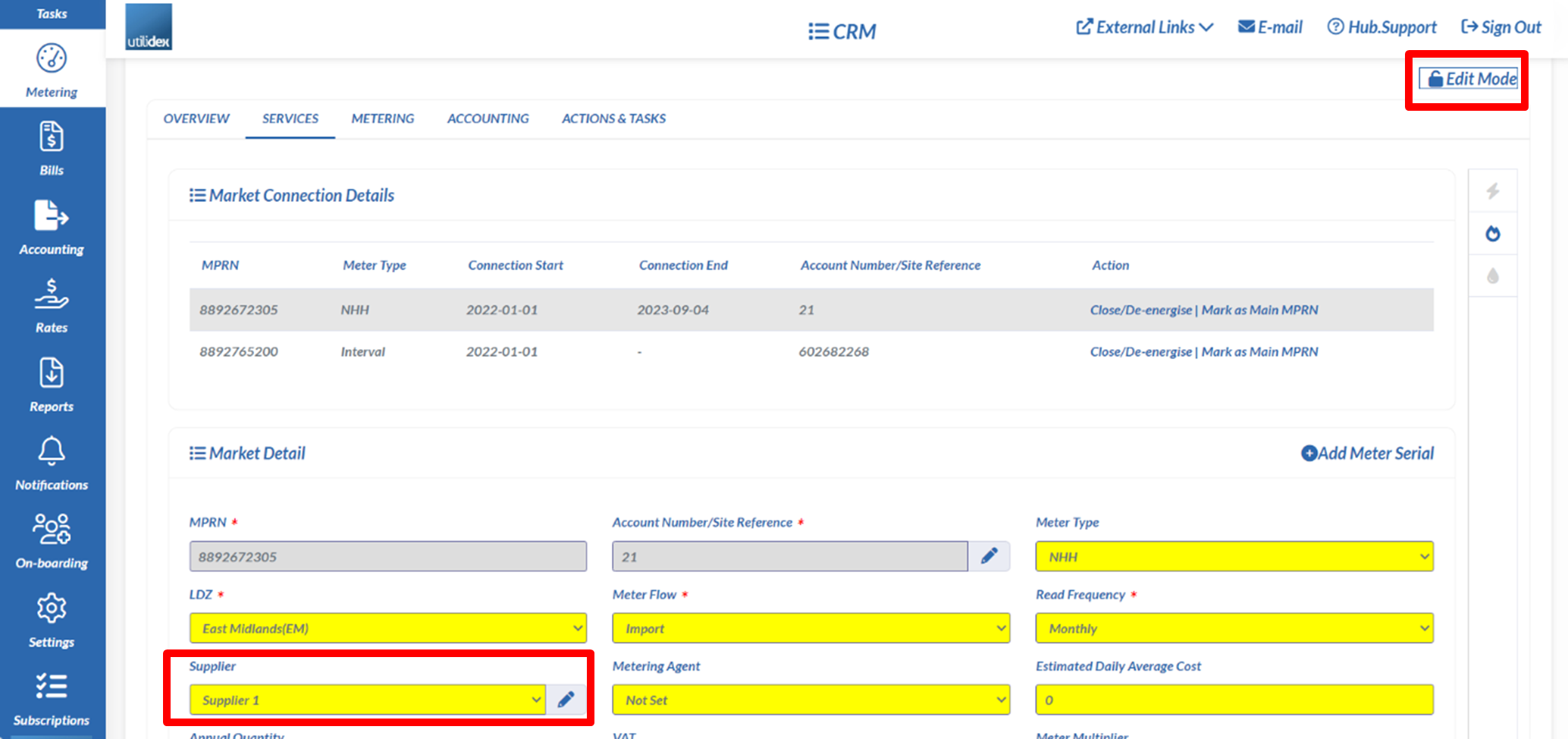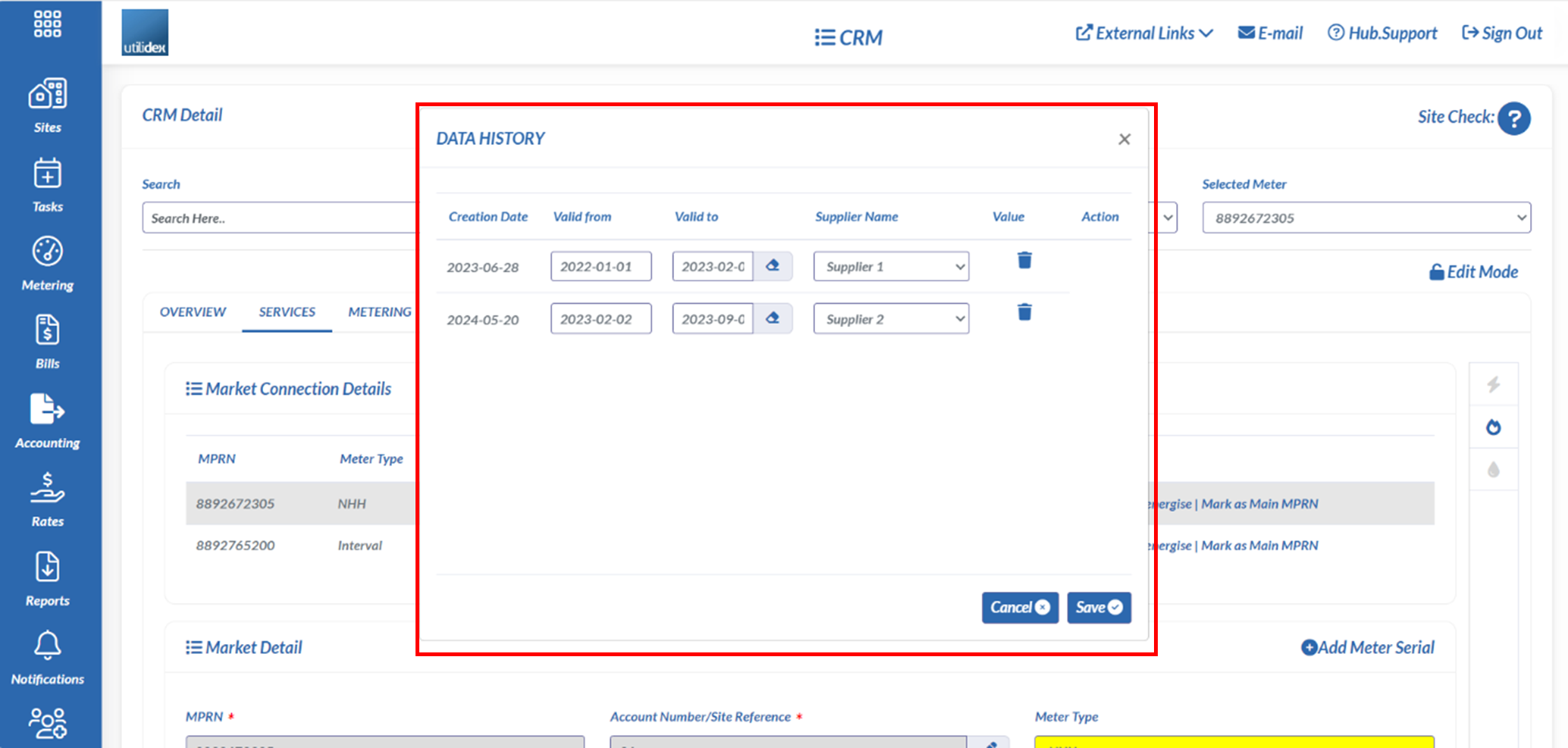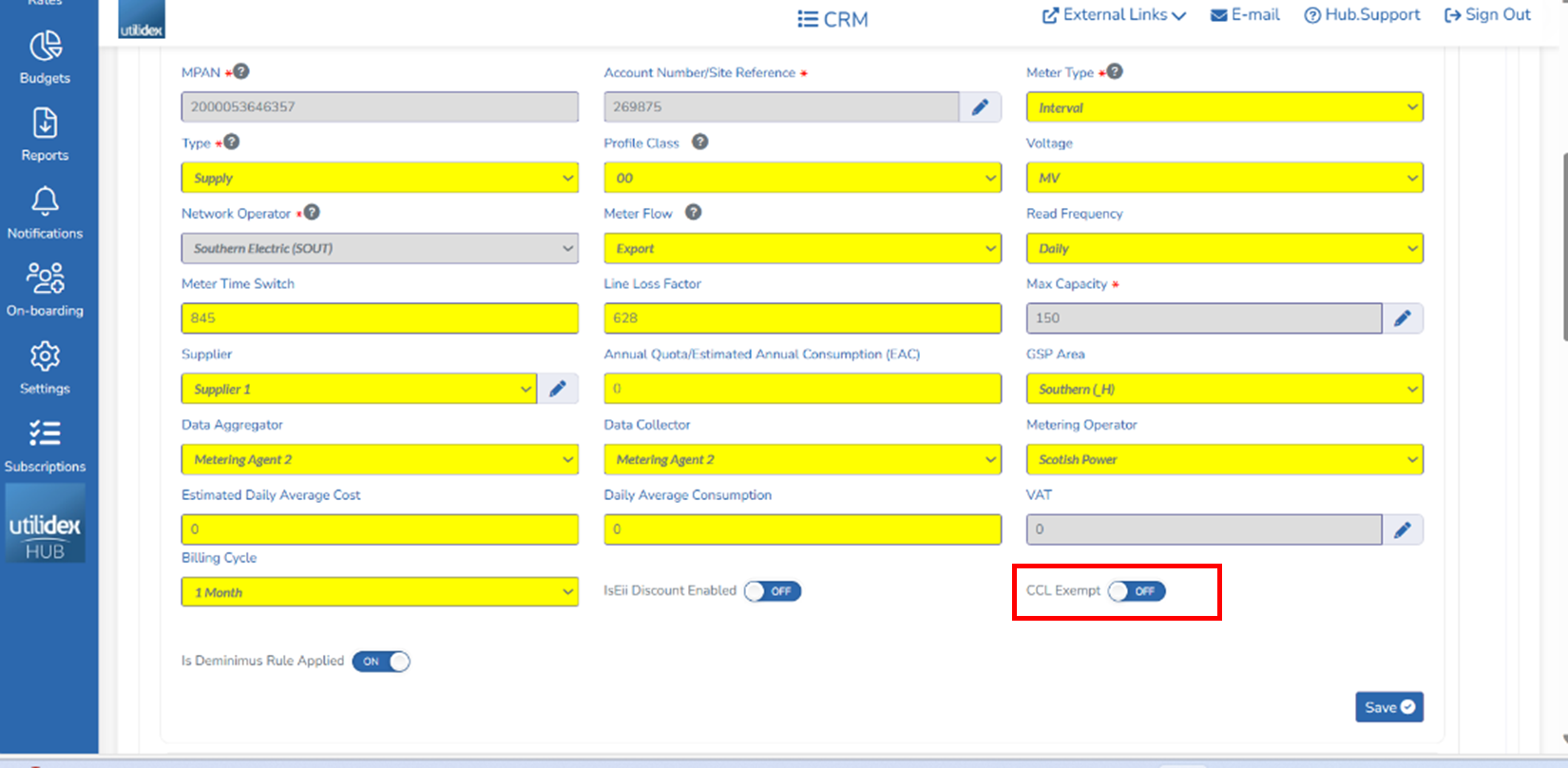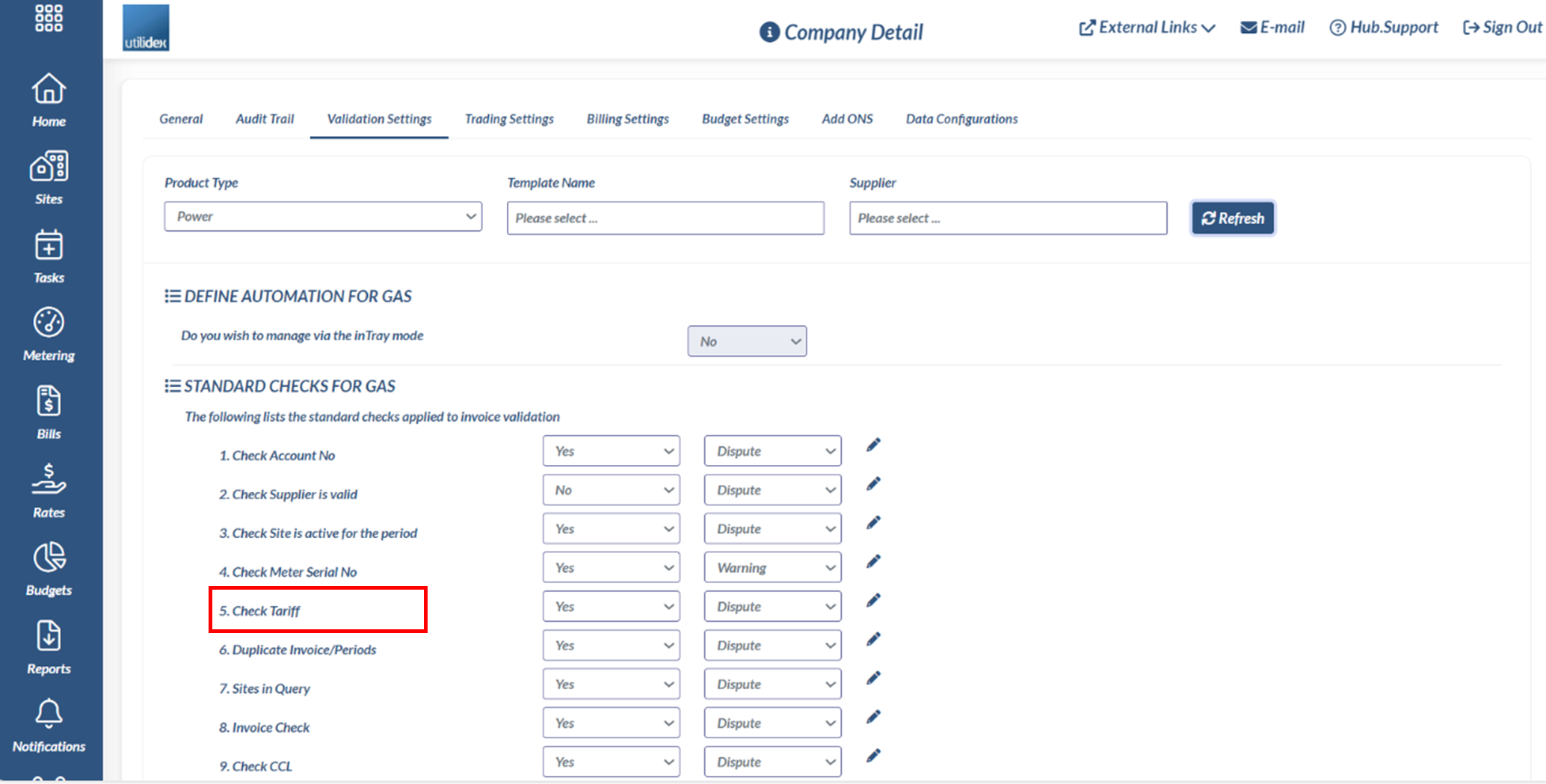Background
To further support our consultants and end-customers, the Energy.Hub has introduced a new feature that holds Supplier, Tariff, CCL, VAT, Account Numbers, Max Capacity and the VAT data versioning. Data Versioning allows the end customer to alter certain fields on a date basis, so we can assign fields to exact time periods.
Fields such as the Supplier, Tariff, CCL, VAT, Account Numbers, Max Capacity and the VAT can vary over time therefore this is a necessary feature in order to allow our end customers to alter them in both bulk and single site entries.
Data Versioning – Site CRM
To update a new suppliers, account numbers, VAT and Tariffs via the Site CRM screen, navigate to Sites >> View Site List >> Enter a single meter by clicking on a site name >> Services Tab.
To make any changes unlock the page by pressing the lock symbol in the top right-hand corner, this page will now be editable.
Once the page is editable, navigate to the field you intend to update and click the ‘pencil’ on the right-hand side (See fig a) . Depending on the data your altering there should be a box labelled with the name of the data your altering e.g. for Tariff ‘supply tariff’ would be the box.
(fig a)

A Pop-Up titled ‘Data History’ will appear. (See fig b)
To create a new entry, enter the date into the ‘Valid to’ input section for the supplier
A new row will appear where you can create a new entry.
(Note) The Valid From date needs to be the day after the Valid To date of the previous supplier. Once complete, Press Save.
(Fig b)

The new supplier will now be updated on the Site CRM screen (See fig c)
(Note) The start date of the new entry must be the day after the previous entries valid to date. The valid to and from date must be before the Connection End date of the meter.
(Fig c)

Data Versioning – Multiple Site Entry
This section will explain how to update multiple entries via the Multiple Site entry section. Making it easier to update large amounts of information in one go.
Multiple Site Entry
Changing your data in bulk for Supplier, Tariff, CCL, VAT, Account Numbers, Max Capacity and the VAT is the same process. The example we will be using will be with the Tariff Data versioning but all the Bulk upload process steps are the same.
In order to change Tariffs for multiple sites head over to sites-> multiple site entry-> actions-> data versioning-> download data.
When you download the data you will receive a spreadsheet with all the current tariffs attached to their meters and their start and end dates.
To add in a new tariff you simply have to insert a line underneath the old tariff and fill out the require fields. Ensure that the new date for the new tariff is consecutive to the end date of the old tariff as seen in (fig l)
(fig d)

CCL
Updating CCL will be the same process as Supplier, Tariff, VAT, Account Numbers, Max Capacity and the VAT. The only difference, is the ‘CCL Exemption‘ must be toggled on. Go to Site -> Site List -> Select any site -> Services -> Click on Locked to edit the page and turn on. (See fig e)

Again click on Locked to edit. Click on pencil icon on CCL Discount and follow the same process mentioned above. (See fig f)
Validation Settings
(fig h)

The check “Check Supplier is valid” will need to check that the bill received is from the same supplier that is recorded in the Energy.Hub for the period of the bill. This relates to the supplier versioning mentioned.
The check “Check Tariff” will need to check that a meter has a tariff assigned for the period of the bill.
Billing
For Billing, the system will need to check what period a bill is invoicing and generate a bill using the tariff data for that period.
When generating or refreshing a bill (or the PDF), the system will need to use the version of the tariff assigned to the site that is valid for the period of the bill.
Therefore, the tariff check will Pass the invoice if there is a valid tariff assigned to the meter for the period in reference, otherwise the bill will fail.
Validation
For Bill Validation, the system will need to work similarly in terms of using the correct version of the tariff according to the period of the invoice that is being validated. The system will be able to read the uploaded bills and understand which version of the assigned tariffs is relevant to the bill.
Multiple Entry Errors
If the file fails to upload, please check the following areas:
If an upload fails due to file name, you will see a message highlighting what the correct format of the file name should be. Adjust the file name accordingly.

If an upload fails due to a non-supported file type, you will see a message instructing you to use an XLS format and an option for downloading the Bulk Upload Template.

If an upload fail message of ‘File processing was unsuccessful’ appears, you will be given the option to download the error file. By clicking on the ‘click here’ link in the message.
